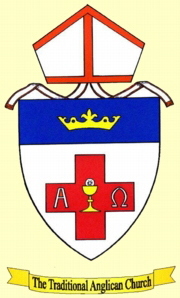You will find here materials for making a spiritual communion while we cannot worship together.
Our worship is based on the Book of Common Prayer which was brought into use in 1662. But we do not follow it as then enacted. The reasons for this lie in the history of the Church of England until its progressive abandonment of 1662 as the standard of worship.
It should be realised that 1662 was not a mere restoration of the prayer book in use before Cromwell's military dictatorship. Major alterations were made so that no minister could use the book without affirming every day the king and the succession. Major alterations were also made in the Communion service, mainly by inserting marginal instructions (rubrics) as to how it was to be performed and understood. These probably precluded the meaning Cranmer would have attached to his own prayer books, even though most of his text was unchanged. The Ordinal (strictly a separate book) was also revised.
Literal following of 1662 meant that the congregation was silent, except when positively instructed to repeat material after the minister. There were no hymns (metrical psalms were tolerated before and after the service but not as part of it). Morning worship consisted of Morning Prayer, Litany and the first part of the Communion service, ending with a reading of part of one of the homilies, or occasionally a sermon. The full Communion service was rare in practice, often only happening four times a year. Indeed the rules in 1662 forbade the Communion unless a "convenient number" (it seems 15% of those entitled to communicate) had given notice of their intention to receive.
In the course of the nineteenth century various changes to the use (but not the text) of 1662 were made by lawful process. It became lawful to use the services separately, and so to preach at Morning Prayer. The Communion could also be used separately and was sometimes said early in the morning, thus before Morning Prayer. It was accepted that hymns (and possibly prayers) could be inserted. Large parts of the Communion service (the exhortations) could sometimes be left unsaid. (Note that to make cuts in this way is to change doctrine!) The congregation came to take a more active part in the services - much of which were sung. The rules which restricted the use of the Communion service fell into disuse, and it became more frequent.
There were other more disputed changes such as the revival of traditional vestments, the placing of a cross or crucifix on the Holy Table, and the use of candles and incense. There was some use of pre-reformation or counter-reformation material. It is right to mention these developments, but it is wiser to focus on the changes which were generally accepted as lawful.
Scholarship established that the general shape of the Communion service was rather unlike that of the ancient liturgies of other churches. There was therefore an increasing desire to make the Communion service more like them.
The attempt to revise 1662 commonly known as 1928 was rejected by Parliament. Mostly, the revisions consisted of alternative versions of the 1662 services. The bishops (illegally) tolerated or even commended use of these alternatives. In the case of Morning and Evening Prayer, these alternatives became widely used. In the case of the Communion service, the main effect of the alternative form was that even more could sometimes be left out (for instance the Ten Commandments). The 1928 Eucharistic Prayer was rarely used, however. Instead, some bishops tolerated shuffling the component material in 1662 into a shape more like that of the ancient liturgies, and indeed that of the 1549 Prayer Book.
Most of these developments were eventually given undoubted legal status in the "Series 1" Alternative Services, which largely remain available (if little used) in the current Church of England. The revised Canons of that body also made the use of traditional vestments lawful. We accept these changes (but not later ones) as proper modifications of 1662. Accordingly our canons allow use of material from the 1928 book.
Both 1662 and the "Series 1" Communion services are attempts to make the best of somewhat recalcitrant material. We do not claim more for them. But we do not have the gifts needed for major change, and we have seen the harm which unwise change has done to other Christian bodies.
Because of our limited resources, most parishes will only be able to provide the Communion service.
Any scholar will realise that this is a very brief summary. More could be said on every point. I hope it explains, particularly for any readers outside England, the peculiarities of English developments.
